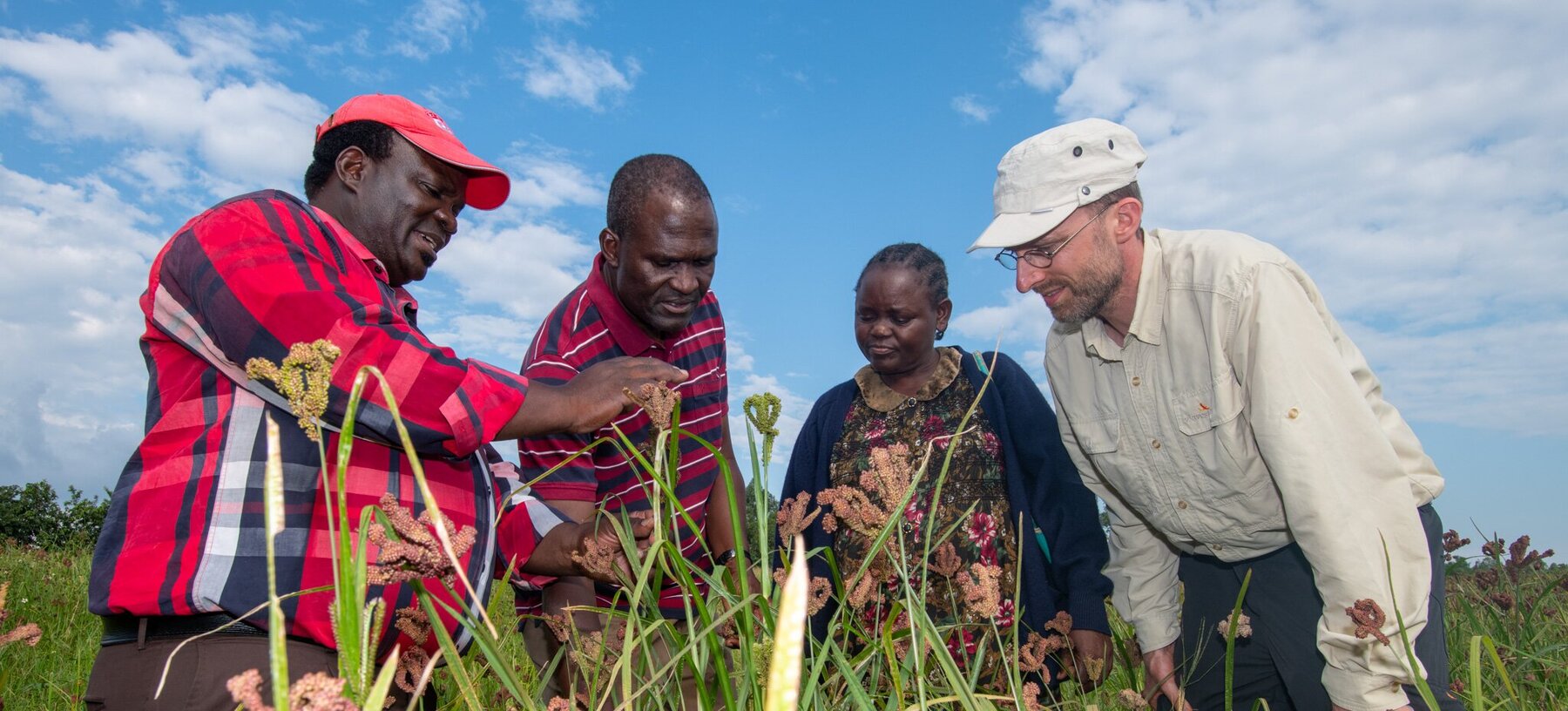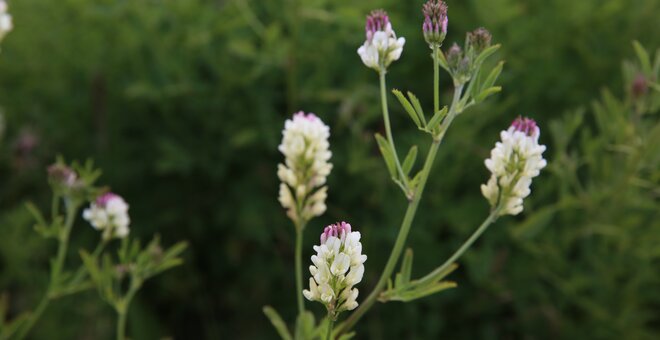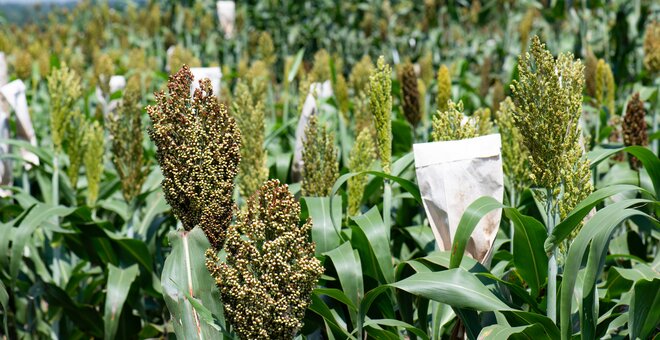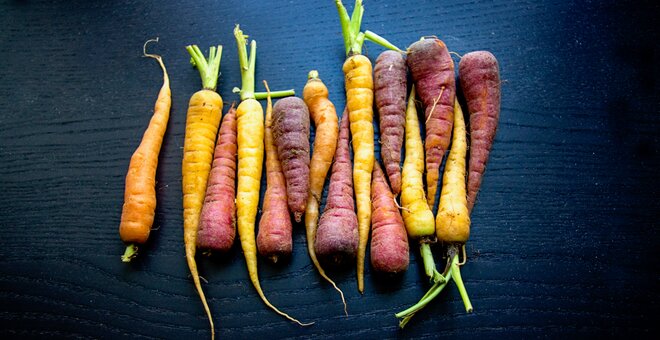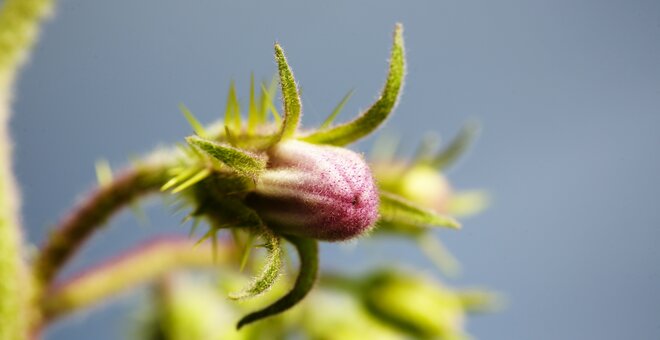Pre-breeding and Evaluation
Agriculture is facing growing challenges, such as shifts in seasons, more intense rains, droughts, pests, and other effects of the changing climate.
“If we want to have crops that can cope with these challenges—if we want to ensure an ongoing food supply—then we need to go back to the wild and give pre-breeding with crop wild relatives long-term investment,” says Benjamin Kilian, leader of the Crop Wild Relatives Project.
And this is what the Crop Wild Relatives Project set out to do—and did, exceeding expectations.
By mid-2021, project partners had delivered more than 14,000 pre-bred lines of 19 crops that incorporated genes for important traits from crop wild relatives (CWR). While these were intended for use by breeders, some have proved so promising in evaluation trials that they have been released to farmers. These include salt-tolerant rice varieties in Vietnam, cold-tolerant varieties of alfalfa in Chile, China and Kazakhstan, disease-resistant varieties of potato in Peru and drought resistant varieties of durum wheat in Lebanon. One project alone, led by the International Center for Agricultural Research in the Dry Areas (ICARDA) and involving partners in Ethiopia, Lebanon, Morocco and Senegal, generated some 500 CWR-derived elite lines of durum wheat, barley, and lentil.
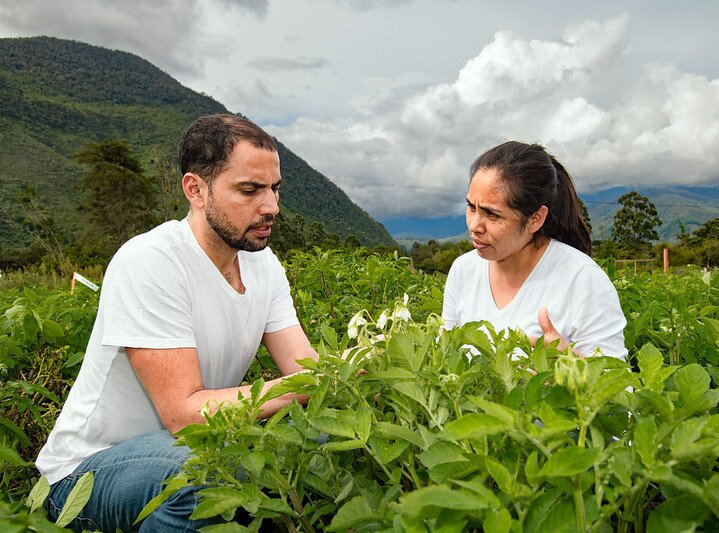
What is pre-breeding?
Pre-breeding involves making crosses between wild and domesticated species and then crossing the offspring again with domesticated varieties numerous times until you have a plant that has the traits of interest from the wild relatives—such as pest or disease resistance—in a plant that has most of the characteristics of the domesticated crop, such as high yield and nutritional qualities. The resultant “pre-bred lines” can then be used by plant breeders as parents for further crosses to produce studier, “climate-proof” varieties that meet the needs of farmers and markets.
Focus on 19 crops
“At the beginning of the project we conducted a series of expert consultations on pre-breeding,” said Ben Kilian, current leader of the CWR Project. These identified 19 crops that the project would target in the first instance, each with its own target trait or traits that the pre-breeding effort would address. These projects have involved 62 national and international partners in 34 countries.
Evaluation of the CWR collected by the project and others already in genebanks found useful traits in many of the seed samples.
“We have had some fascinating, and surprising, results,” said Kilian. Take the example of drought tolerance. Work on sorghum in Kenya found useful sources of drought tolerance among wild relatives and landraces, or farmer varieties, in genebanks, and studies on wild carrots in Bangladesh and Pakistan identified plants with heat and drought tolerance. But work on sweetpotato found that cultivated varieties have greater drought tolerance than the crop’s wild relatives. However, research on wild sweetpotato relatives indicates that some seem to “remember” how to adapt to stress, which may allow breeders to use these wild relatives to help the cultivated sweetpotato resist drought and adapt to climate change.
Useful traits identified included tolerance to abiotic stresses, such as drought, heat and salinity, in alfalfa, carrot, durum wheat, eggplant, sorghum and sweetpotato; resistance to pests and diseases in barley, finger millet and grasspea; and improved nutrient content in the wild relatives of chickpeas.
But this is just the beginning. CWRs often look very different from their domesticated cousins and may not readily crossbreed with them. For example, wild potatoes have two sets of chromosomes, while the cultivated potato has four—a fundamental difference that had to be overcome before crosses would succeed. Overcoming such barriers is part and parcel of pre-breeding. The useful traits have first to be transferred to so-called “breeding lines”—varieties that may not be ready as they are for release to farmers but that can more readily be crossed with cultivated varieties with the characteristics that farmers and consumers want, such as high yield and cooking quality. This involves crossing the wild relative with a domesticated variety and then crossing the offspring repeatedly with the domesticated variety until the breeder has a plant the has the desired trait from the wild relative and the “improved” characteristics of the domesticated variety.
“Some of our partners had made crosses with crop wild relatives before the project started, some of them 20 years ago or more, so we started with these,” said Kilian. The project built on this early work, providing support for evaluation of the materials already on hand and for multiplication and wider testing of the promising materials.
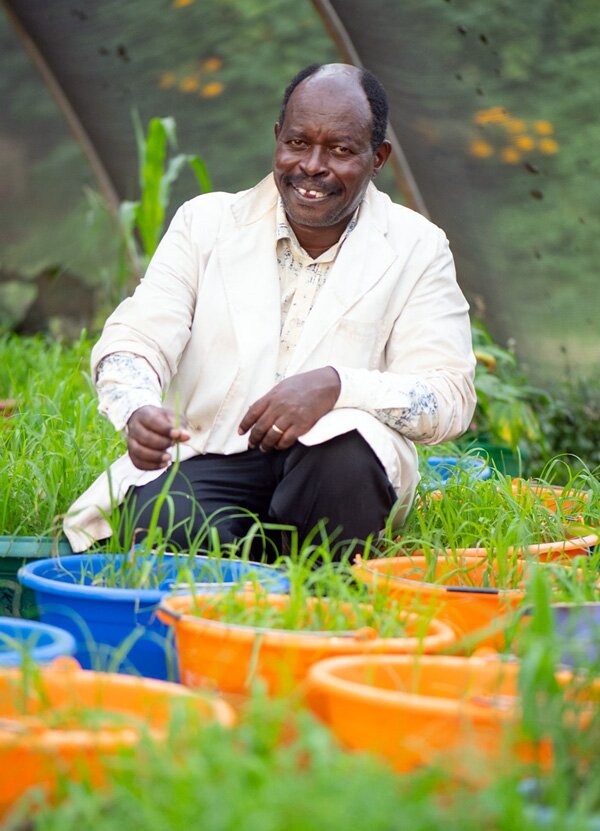
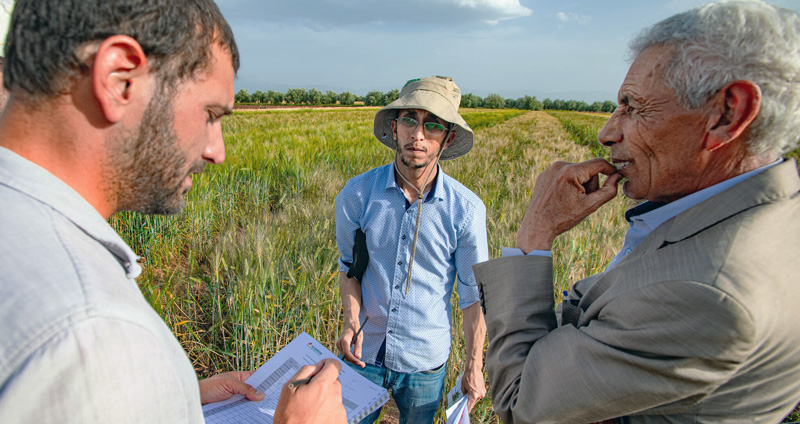
Engaging with farmers
A key focus of this effort was engaging with farmers at an early stage. “Developing better seeds that can withstand the effects of climate change is only valuable if farmers actually want to grow them,” notes Kilian. This is why the active participation of farmers is essential when developing new climate-resilient crop varieties. Their involvement helps ensure that the time—sometimes decades—and considerable money needed to develop a new crop variety is not wasted.
In Vietnam, for example, 13 farmers’ groups—known as Seed Clubs—in the Mekong Delta were closely involved in evaluating and selecting pre-bred rice lines derived from crop wild relatives. These lines are the product of the CWR Project’s pilot pre-breeding efforts on rice, where Cornell University and the International Rice Research Institute worked with crosses between four accessions of the wild rice cousin Oryza rufipogon L. from four different countries and an elite Asian rice variety (Oryza sativa), IRRI 154.
“The Seed Clubs are growing these wild rice-derived lines on their farms. They then select the most promising individuals to be regrown the coming season,” said Dr. Huynh Quang Tin, Senior Lecturer at the Mekong Delta Development Research Institute, Can Tho University, who was leading the rice pre-breeding effort in Vietnam.
Four of the CWR-derived lines tested proved to be well adapted to local environmental conditions and three were high yielding, matured early and were short, suiting the farmers’ needs. All four lines have been adopted by local farmers and are now being tested more widely in the coastal zone of the Mekong Delta.
Similarly, farmers have been closely involved in evaluation and section of alfalfa, barley, lentils, pigeonpea, potato and durum wheat.
“Working with farmers directly in evaluating and selecting breeding lines is essential,” said Dr. Shivali Sharma, who led the pre-breeding work on pigeonpea. “This helps ensure that lines we develop meet their needs—they often spot issues that even the best breeders can overlook,” she continued.
“Farmers are really the hope of the future, and we need to invest in bringing them into te conversation.”
- Maria Scurrah, director of Grupo Yanapai, an NGO that works with Andean farmers
And putting varieties in their hands
CWR-derived lines of several crops are already in the hands of farmers, thanks to work supported by the project. These include alfalfa, durum wheat, finger millet, lentil, potato and rice.
CWR-derived alfalfa lines developed with support of the project, for example, are already in use by farmers in Chile, China and Kazakhstan. “We identified very high levels of diversity in wild species of alfalfa, which are adapted to a range of really unfavorable environments, and used it to develop alfalfas that not just survive through extremes of drought and cold, but actually grow rather well,” said Alan Humphries, Principal Research Scientist at the Department of Primary Industries and Regions research division South Australian Research and Development Institute (SARDI) who led much of the pre-breeding work on alfalfa under the project. “We have received a request from Ladakh in India, which is close to the Himalayas, so it’s likely to require high levels of cold tolerance,” he said. “We’re really excited to see how the germplasm that performed well in Kazakhstan and Inner Mongolia does in that environment.”
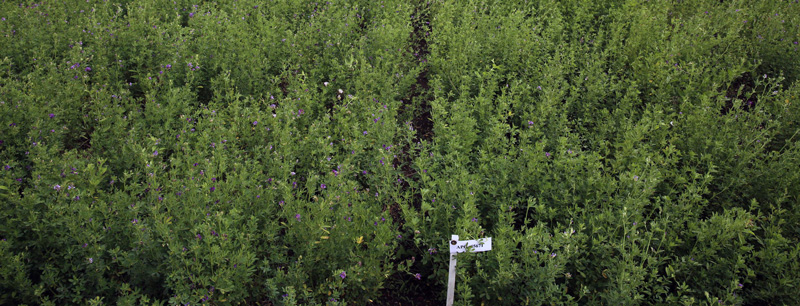
Cutting edge technologies
“This project is using exciting new methods and tools, like speed breeding and genomics, to revolutionize the breeding of improved varieties of neglected crops, which will get climate-smart crops into the hands of smallholder farmers more quickly,” notes Kilian.
“Speed breeding”, an approach that grows plants in greenhouses under artificial lighting for up to 22 hours a day, helps plants mature more quickly—with up to six “crops” of wheat a year, for example. This shortens the time taken from an initial cross to a variety ready for farmers’ fields from 12 years to only 5 years. The technique has already been used with durum wheat, barley, chickpea, lentil and grasspea
“It used to take six to seven years to breed a new grasspea variety, or up to 12 years when wild relatives are used as parents,” says Shiv Kumar Agrawal, who leads ICARDA’s Food Legumes Program. “But by increasing the hours of light and controlling the temperature, the plant completes its growth cycle faster. This means we can grow more generations per year, and a new variety can be ready for farmers’ fields in roughly five years.”
Recent advances in gene sequencing and mapping have been used to develop new populations of sorghum using wild relatives of sorghum and local varieties collected from across Africa. These 13 populations—comprising more than 1,200 “lines”—have been mapped and more than 42,000 “markers” identified that will help guide breeders to genes for characteristics such as drought and heat tolerance and disease and pest resistance, greatly facilitating breeding efforts.
Diversity is the name of the game
The focus of the CWR Project is diversity, but not just in the plants—the people and organizations involved are as diverse and the crops.
Partners include national, regional and international organizations, public and private sectors, and everyone from genetic resources scientists to farmers in the field and even consumers.
“The flow of genetic resources from a genebank all the way to the end user has to pass through two, three, or four groups of people,” notes Dr. Elcio Guimarães, research and development director at the Brazilian Agricultural Research Corporation (EMBRAPA) and an external reviewer of the CWR project. “Genebanks should know what materials to offer the pre-breeder. In turn, pre-breeder should know what to ask for. And that interaction will add up to knowledge and opportunities to explore the materials further.”
“Also, because these pre-breeding projects are exploring different ways to use crop wild relatives, you need to involve experts from other disciplines as well,” he continued. Biotechnologists. Entomologists. Pathologists. The CWR Project brings together all of these actors, and many more, creating the space for all of this knowledge to come together.
This diversity is reflected in the capacity building the project has provided. The project provided training and capacity building programs to 12,686 people – including more than 10,000 farmers – from 124 institutions in 70 countries participated in training and capacity building programs. The CWR Project also supported 211 post-doctoral researchers, graduate students (PhD and MSc) and undergraduate students, described as “the pre-breeders of the future” by Guimarães.
Stories on Pre-breeding and Evaluation
Crop Science Honors Research on Crop Wild Relatives
Two research studies conducted as part of the Crop Trust’s Crop Wild Relatives (CWR) Project have won awards for excellence after appearing in a special issue of the U.S. journal Crop Science last year.
The bimonthly flagship...
7 Oct 2022
Crop Science Special Issue Shows Why Crops Need to Get Wild
When the Growing Gets Tough, the Tough Get Pre-breeding
Much like dogs have wolves, our familiar crops have undomesticated relatives growing in the wild, which often have useful traits not found in their cousins grown on farms. As...
25 Jan 2021
25 Jan 2021
Farmers Know Best: Developing Salt-Tolerant Rice in Vietnam’s Mekong Delta
Just like everybody needs somebody to love, every new crop variety needs a farmer.
Developing better seeds that can withstand the effects of climate change is only valuable if farmers show them a little love, and actually want to...
22 Jun 2021
22 Jun 2021
Wild Sorghum Offers Toolbox for Climate-Proofing Future Crops
Harnessing useful traits found in the weedy distant cousins (“wild relatives”) of domesticated crops to develop more climate-resilient varieties is a lengthy and complex process.
Wild relatives of the arid-zone grain sorghum have...
15 Jul 2021
15 Jul 2021
Climate Proofing the Carrot: Where Flavor Meets Stress Tolerance
Carrots are tasty, versatile, and – while your tomatoes and cauliflowers go all squishy – easy to store for a long time. Most importantly, carrots are packed with micronutrients, especially the precursor of vitamin A.
But carrots...
30 Aug 2022
4 Apr 2020
Wild Cousins Boost Eggplant Breeding on Our Warming Planet
The world’s farmers urgently need new crop varieties that are resilient to such results of climate change as droughts and outbreaks of new pests and diseases.
A team led by Jaime Prohens at the Universitat Politècnica de València...
30 Jan 2022
30 Jan 2022
Top publications related to pre-breeding and evaluation
- A global resource for exploring and exploiting genetic variation in sorghum crop wild relatives Published: 2021
- Characterization and pre-breeding of diverse alfalfa wild relatives originating from drought-stressed environments Published: 2021
- Pre-breeding efforts for widening the genetic base of cool-season food legumes Published: 2020
- Pre-breeding Ecological Characterization of Germination in Aegilops (Poaceae) Published: 2015

